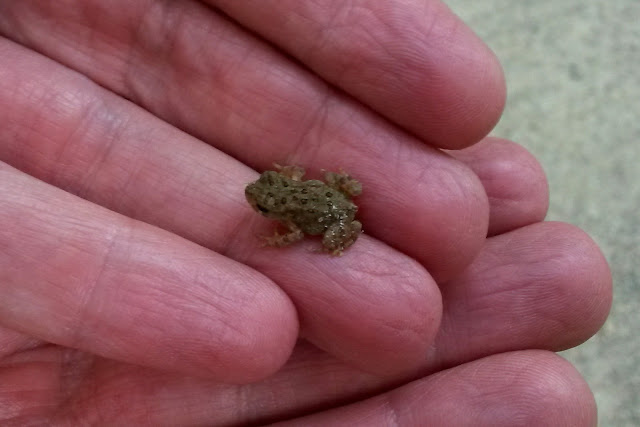It looked like a familiar native species, but being rather large I sent pictures to our local expert, Marge Thorpe, who took a trip out to inspect it and confirmed it as native bladderwort. (Thank you Marge!)
 |
| Bladderwort |
I didn't see any other plants of concern, always a relief. Hopefully my fellow weedwatchers will have the same results on their sections of lake. Of course, the credit for this goes to all the users of the lake who are careful to remove any plants from their boats as they travel from lake to lake - as well as to all the great volunteers who conduct the critical Lake Host program on Wicwas and many other bodies of water throughout New England.
The variety of water plants within this one lake is really quite diverse. There are many sizes and shapes of lily pads with wide, flat leaves that in some areas completely cover the surface of the lake, yet even when they blanket the water, other plants have evolved with the opposite form so they can protrude right up through them, tall and needle-like.
I saw only a few of a similar tall, skinny plant, this one with tiny white flowers on the top of each stalk.
Many of the arrowheads (pickerelweed) around the lake have had their leaves chewed off by the geese, leaving more narrow stalks sticking up out of the water.
Then there are the grasses, some of which grow tall and lie flat upon the surface.
Sorry I don't know the names of most of these - perhaps a project for a cold winter day....
In addition to providing a source of food, all these aquatic plants perform important functions in the life of the lake, including filtering water and providing cover for myriad small animals. They can also help to crowd out invasive species that might otherwise try to take hold in a barren section of a lake.
The search also brought me to notice some terrestrial plants that grow right on the water's edge. The Turtlehead for one:
 |
| Turtelhead (Chelone) |
I liked the way one single plant found a place to settle down among the rocks on the shoreline.
Finally, peering into the water brought me to this pair of water bugs, identified by a fellow lake watcher and biologist (thanks Dave!) as "Whirligig Beatles" (Gyrinus natator). They chased each other around madly in circles,
every now and then stopping for just a second to cozy up,
and then resuming the chase again.
Kind of reminds me of being a teenager. Maybe he should search the lake and bring her a pretty flower.


















































